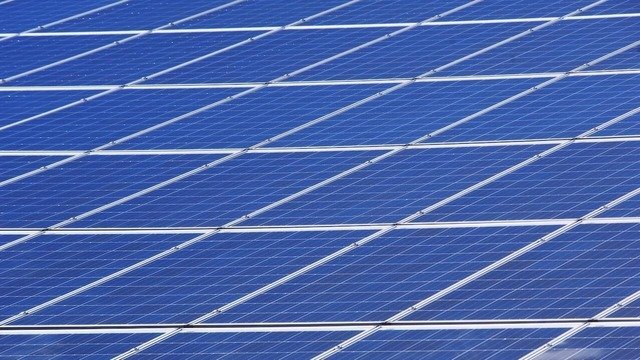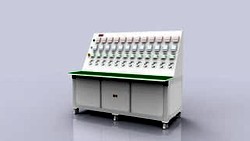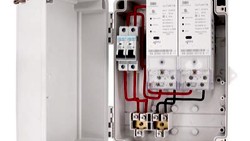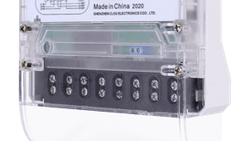The world is in need of a sustainable energy solution. We're using fossil fuels at an unsustainable rate, which means we're going to have a major problem on our hands eventually. Luckily for us, there are a number of renewable sources of energy that can help meet our needs in the future. This blog post will go over five different types – wind, solar, biomass, geothermal, and hydropower – to give you an overview of what they are and how they work.
Wind Power Generation
Wind is a renewable energy source that generates power through the use of turbines. The wind spins the blades of these turbines to create motion that turns a shaft. This shaft then drives an electric generator which produces electricity.
The blades either breaks the air, which, using the principle of resistance, causes the turbines to start spinning when the wind strikes the blades directly. When air layers of various temperatures collide with one another and the asymmetric wind turbine blades enter the space between the layers, buoyancy is the other process that propels the rotor blades. During this process, there are no emissions produced.
The black-start capabilities of commercial turbines are limited. They need auxiliary power for heating, hydraulics, and control circuits. The average consumption is 20 kW to 30 kW.
Solar Energy
Any energy produced by the sun is referred to as solar energy. Nuclear fusion occurs in the sun and produces solar energy. In the sun's core, fusion happens when the protons of colliding hydrogen atoms fuse to form helium atoms.

- Photovoltaics
Probably the most well-known method of using solar energy is photovoltaics. Solar panels, which are made up of tens or hundreds of solar cells, are the most common component of photovoltaic arrays. A silicon-based semiconductor is found inside every solar cell. The semiconductor releases electrons when sunlight is absorbed by it. These free electrons are guided into an electric current by an electrical field, which flows in one direction. That current is directed to an outside entity via metal contacts at the top and bottom of a solar cell. This entity can either be an energy storage battery or a direct connection to the grid with inverters. - Concentrated Solar Energy
Concentrated solar energy, often known as concentrated solar power, is another form of active solar technology (CSP). CSP technology concentrates sunlight from a wide area into a tower by using lenses and mirrors. This tower heats a fluid, which then runs a generator to produce electricity. There are various different designs for solar power towers. Also, mirrors and lenses designs are permanently under improvement.
A small example for the operation principle is the solar cooker. - Thermal solar systems
Solar irradiation is converted into heat in thermal solar systems. It is then made possible to employ this in building technology, process technology, or thermal solar power plants to produce electricity.
Energy from Biomass
Biomass is the biodegradable part of products, waste and residues from agriculture of biological origin including animal and plant substances, forestry and related industries, including fisheries and aquaculture. According to this definition, the biodegradable part of waste from industry and households is also part of biomass. (Definition acc. to European Union for Renewable Energy).
There are several variants for using biomass
- Direct combustion
The biomass is burned to produce heat or run a generator - Chemical conversion
Organic fats and oils are converted into methyl esters to produce biodiesel. - Gasification
Biomass is heated with a controlled amount of oxygen and steam to produce gas and liquid fuels. - Pyrolysis
Biomass is heated in the absence of oxygen to produce gas, liquid- and solid fuels. - Microbial conversion
Biomass is digested by anaerobic bacteria to produce gas and alcohol fuels.
Geothermal energy
Geothermal energy is heat produced by the Earth itself. It is a resource that may be gathered for human use. The core of our planet, which is 2,900 km below the surface, is where it becomes hottest. The friction and gravitational attraction that were created when Earth was formed account for a minor amount of the core's heat.
Geysers, hot springs, steam vents, undersea hydrothermal vents, and mud pots are among ways that hot water can be released. All of these come from geothermal energy sources. Their steam can be used to produce power, or their heat can be caught and used directly for heating.
Many countries have created techniques for utilizing geothermal energy. There are various geothermal energy sources accessible around the world. In Iceland, the majority of the population is able to rely on geothermal energy as a secure, dependable, and affordable source of energy.
Hydro-Electrical Energy
Hydroelectric energy is a form of energy that uses the power of water in motion to generate electricity. The majority of hydroelectric power plants involve a water reservoir, a gate or valve to regulate the amount of water that flows out of the reservoir, and an outlet where the water ends up after flowing downstream. When water rushes over the top of a dam or cascades down a hill, it gains potential energy. Water flowing downhill changes potential energy into kinetic energy. When a turbine's blades are turned by water, electricity is produced and sent to the grid. There are different types of hydroelectric power plants:
- Using dams
The dam is used to control the flow of water in a reservoir. When more energy is needed, more water is released from the dam. Once water is released, it flows downward through a turbine. - Using Channels
A fraction of water in a river is led via tubes through a generator. - Pump storage
This facility gathers and stores the overproduced energy generated by nuclear, wind, and solar power for later use. Pumping water uphill from a pool at a lower level to a reservoir at a higher elevation is how the plant stores energy. Water from the higher pool is released when there is a significant demand for electricity. This water powers a turbine to produce more electricity when it returns to the lower reservoir. - Tidal Power Plants
Tidal power plants use the dam principle and are built on bays and estuaries with a particularly high tidal range. To make this work, the corresponding bay is insulated with a dike. Water turbines are installed in the dike and are powered by the entering water at high tide and the outgoing water at low tide, which explains why the turbines work in both directions of flow. - Wave Power
Wind flowing over the sea's surface creates waves. Energy is transferred from the wind to the waves as long as the waves propagate slower than the wind speed. Wave energy converters are capturing the energy from the oscillating waves. This technology is not widespread.
Takeaway
Renewable energy technologies are becoming more popular as the cost continues to fall. These technologies have the ability to cut emissions and supply sustainable energy, which are crucial not only for this generation, but also for a better future. Most of the developments are using electronics for control, so a backup power like energy storage container is mandatory for proper functionality in case of emergency.
Editor's note: This article was originally published in October 2022 and has been updated for comprehensiveness.





All comments are moderated before being published. Inappropriate or off-topic comments may not be approved.